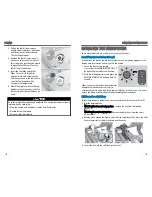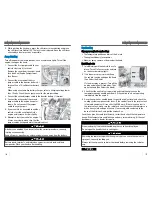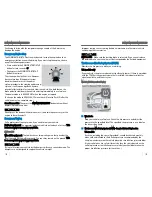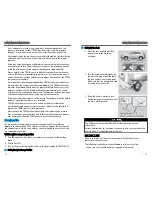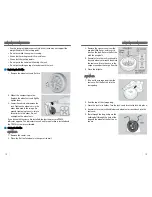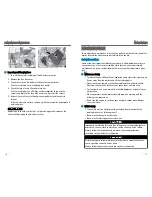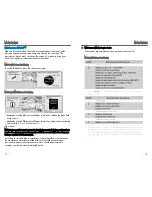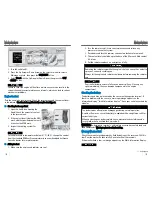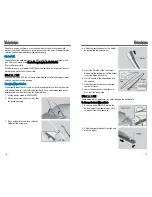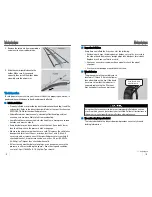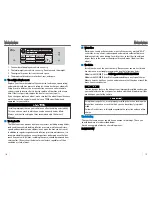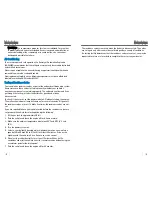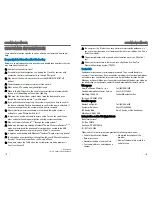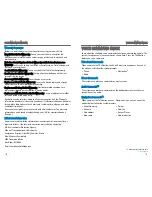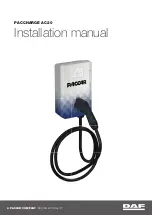
As an added safety feature, your vehicle has been equipped with a tire
pressure monitoring system (TPMS) that illuminates a low tire pressure
telltale when one or more of your tires is significantly under-inflated.
Accordingly, when the low tire pressure telltale illuminates, you should stop
and check your tires as soon as possible, and inflate them to the proper
pressure.
Driving on a significantly under-inflated tire causes the tire to overheat and
can lead to tire failure. Under-inflation also reduces fuel efficiency and tire
tread life, and may affect the vehicle's handling and stopping ability.
Please note that the TPMS is not a substitute for proper tire maintenance,
and it is the driver's responsibility to maintain correct tire pressure, even if
under-inflation has not reached the level to trigger illumination of the TPMS
low tire pressure telltale.
Your vehicle has also been equipped with a TPMS malfunction indicator to
indicate when the system is not operating properly. The TPMS malfunction
indicator is combined with the low tire pressure telltale. When the system
detects a malfunction, the telltale will flash for approximately one minute
and then remain continuously illuminated. This sequence will continue upon
subsequent vehicle start-ups as long as the malfunction exists.
When the malfunction indicator is illuminated, the system may not be able to
detect or signal low tire pressure as intended.
TPMS malfunctions may occur for a variety of reasons, including the
installation of replacement or alternate tires or wheels on the vehicle that
prevent the TPMS from functioning properly.
Always check the TPMS malfunction telltale after replacing one or more
tires or wheels on your vehicle to ensure that the replacement or alternate
tires and wheels allow the TPMS to continue to function properly.
Changing a Tire
If a tire goes flat while driving, grasp the steering wheel firmly and brake
gradually to reduce speed. Then stop in a safe place. Replace the flat tire with
the compact spare tire. Go to a dealer as soon as possible to have the full-size
tire repaired or replaced.
Vehicles with a compact spare tire:
1. Park the vehicle on firm, level, non-slippery surface and set the parking
brake.
2. Shift to Park (P).
3. Turn on the hazard warning lights and set the power mode to VEHICLE OFF.
n
Getting Ready to Change the Tire
HANDLING THE UNEXPECTED
110 |
n
Setting Up the Jack
1. Place the jack under the jacking
point closest to the tire to be
changed.
2. Turn the end bracket clockwise (as
shown in the image) until the top of
the jack contacts the jacking point.
Make sure that the jacking point tab
is resting in the jack notch.
3. Raise the vehicle, using the jack
handle bar and the jack handle, until
the tire is off the ground.
The vehicle can easily roll off the jack, seriously injuring anyone
underneath.
Follow the directions for changing a tire exactly, and never get under the
vehicle when it is supported only by the jack.
Do not use the jack if it doesn't work properly. Call your dealer or a
professional towing service.
The following instructions must be followed to use the jack safely:
• Do not use the jack with people or luggage in the vehicle.
HANDLING THE UNEXPECTED
| 111












